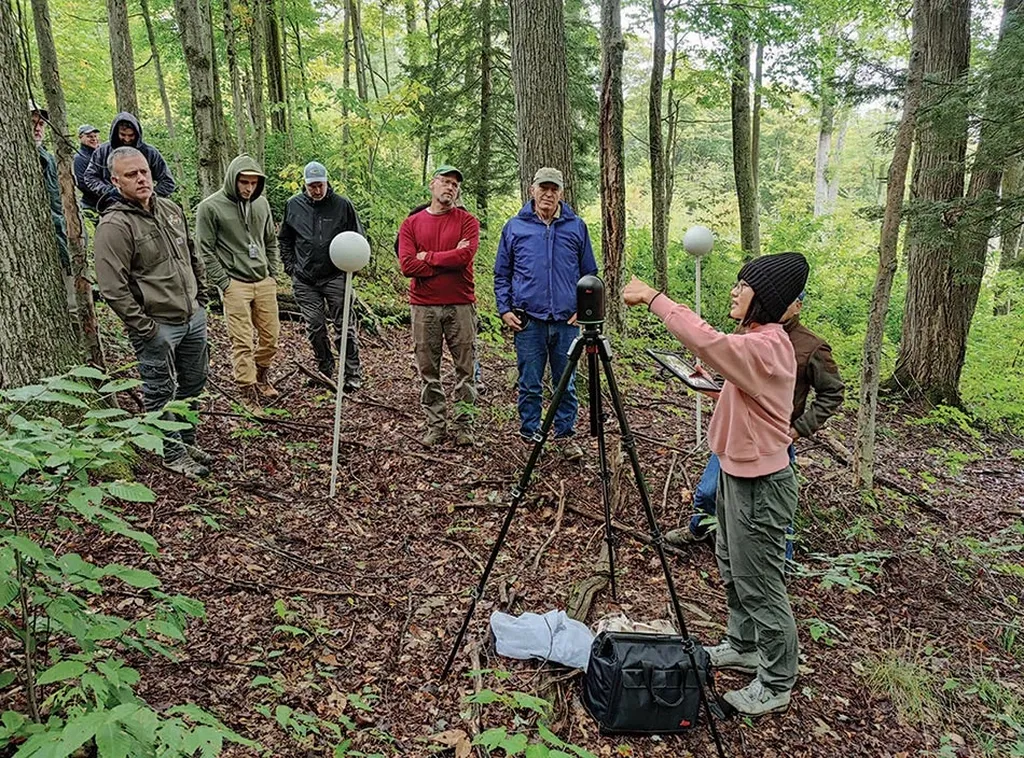In the heart of the Bohemian Forest Ecosystem, a groundbreaking study is unlocking new ways to understand and protect stream ecosystems, with potential implications for the energy sector. Researchers, led by Jana Petruželová from the Department of Botany and Zoology at Masaryk University, have demonstrated that high-resolution LiDAR (Light Detection and Ranging) data can be a game-changer in assessing macroinvertebrate communities in forest streams. This innovative approach could revolutionize how we monitor and manage aquatic ecosystems, particularly in regions where forest structure plays a pivotal role in shaping stream habitats.
The study, published in the journal ‘Ecological Indicators’ (translated to English as ‘Environmental Indicators’), focuses on two mountain catchments within the core zones of national parks in the Bohemian Forest. The research team analyzed macroinvertebrate assemblages alongside in-stream environmental variables and LiDAR-derived parameters describing forest structure and land cover at three spatial scales: small (100-meter buffer), medium (500-meter buffer), and catchment-wide.
“Our results demonstrate significant effects of LiDAR variables on macroinvertebrate species composition,” Petruželová explained. “These variables are shaped by forest structure, the extent of non-forest biotopes, and forest disturbance history.” Key predictors included the deciduous/coniferous cover, amount of deadwood, and living tree height and biomass. These factors were linked to in-stream habitat characteristics and water chemistry, but also showed some effects independent of in-stream variables.
At smaller scales, LiDAR variables were primarily linked to in-stream habitat structure, such as organic debris and wood, as well as concentrations of dissolved organic carbon and phosphorus. At the catchment scale, they were more closely associated with water chemistry, including acidity, nutrients, and ion concentrations. This multi-scale approach highlights the utility of LiDAR data for stream assessment, offering a novel way to understand stream-catchment interactions in forested landscapes.
The implications of this research extend beyond ecological monitoring. For the energy sector, particularly hydropower and water resource management, understanding the health and dynamics of stream ecosystems is crucial. LiDAR technology can provide detailed, high-resolution data that can inform decision-making processes, ensuring that energy projects are sustainable and minimize environmental impact.
“This study underscores the importance of multi-scale habitat assessments in assessing macroinvertebrate community structure and stream ecosystem dynamics,” Petruželová added. By integrating remote sensing with traditional ecological monitoring, the research paves the way for more comprehensive and accurate assessments of aquatic ecosystems.
As the energy sector increasingly focuses on sustainability and environmental stewardship, the adoption of advanced technologies like LiDAR can play a pivotal role. This research not only advances our scientific understanding but also offers practical tools for managing and protecting vital ecosystems, ensuring a balanced approach to energy development and environmental conservation.

